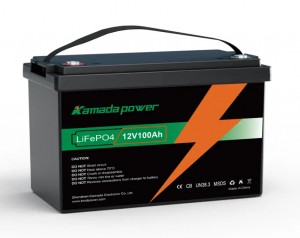Lithium batteries have become an essential power source for a wide range of electronic devices, from smartphones and laptops to electric vehicles. With the increasing dependence on these batteries, a common question that frequently arises is whether lithium batteries should be charged to 100%. In this comprehensive guide, we’ll explore this question in detail, backed by expert insights and research.
Are there any risks associated with charging lithium batteries to 100%?

Table 1: Relationship between Battery Charging Percentage and Battery Lifespan
| Charging Percentage Range |
Recommended Cycle Range |
Lifespan Impact |
| 0-100% |
20-80% |
Optimal |
| 100% |
85-25% |
Reduced by 20% |
Summary: This table illustrates the relationship between battery charging percentage and its lifespan. Charging the battery to 100% can reduce its lifespan by up to 20%. Optimal charging is achieved within the 20-80% range.
Table 2: Impact of Charging Temperature on Battery Performance
| Temperature Range |
Charging Efficiency |
Lifespan Impact |
| 0-45°C |
Optimal |
Optimal |
| 45-60°C |
Good |
Reduced |
| >60°C |
Poor |
Severe reduction |
Summary: This table shows the effect of different temperature ranges on battery charging efficiency and lifespan. Charging at temperatures above 45°C can significantly reduce both efficiency and lifespan.
Table 3: Impact of Charging Methods on Battery Performance
| Charging Method |
Battery Efficiency |
Charging Speed |
| CCCV |
Optimal |
Moderate |
| Only CC or CV |
Good |
Slow |
| Unspecified |
Poor |
Uncertain |
Summary: This table highlights the importance of using the correct charging method. CCCV charging offers optimal efficiency and moderate speed, while using an unspecified method can lead to poor performance and uncertain outcomes.
1. Overcharging can cause safety hazards
Lithium-ion batteries are sensitive to overcharging. When a lithium battery is continuously charged beyond its capacity, it can lead to safety hazards. The battery may overheat, causing thermal runaway, which can result in a fire or even an explosion.
2. Reduced lifespan
Overcharging can significantly reduce the lifespan of lithium batteries. Continuous overcharging can cause stress to the battery cells, leading to a decrease in their capacity and overall lifespan. According to studies, overcharging can reduce the battery’s lifespan by up to 20%.
3. Risk of explosion or fire
Overcharged 12v lithium batteries are at a higher risk of experiencing thermal runaway, a condition where the battery overheats uncontrollably. This can lead to a catastrophic failure, causing the battery to explode or catch fire.
4. Avoid high charge and discharge currents
Excessive charging and discharging currents can also pose risks to lithium batteries. High currents can cause the battery to overheat, leading to internal damage and reducing the battery’s cycle life.
5. Avoid very deep discharges
Extremely deep discharges can also be detrimental to lithium batteries. When a lithium battery is discharged beyond a certain point, it can cause irreversible damage, leading to reduced capacity and potential safety risks.
How to charge lithium battery correctly
To ensure you’re charging your lithium battery correctly and safely, consider the following best practices:
1. Use a Dedicated Lithium Charger
Always use a charger specifically designed for lithium batteries. Using the wrong charger can lead to improper charging and potential safety hazards.
2. Follow CCCV Charging Process
The most effective way to charge a lithium battery is through a two-step process: Constant Current (CC) charging followed by Constant Voltage (CV) charging. This method ensures a gradual and controlled charging process, optimizing the battery’s performance and lifespan.
3. Avoid Overcharging
Continuous trickle charging or leaving the battery connected to the charger for extended periods can be detrimental to the battery’s health and safety. Always disconnect the charger once the battery is fully charged to prevent overcharging.
4. Limit Deep Discharges
Avoid discharging the battery to very low levels. Maintaining a charge level between 20% and 80% is considered optimal for prolonging the battery’s lifespan and maintaining its performance.
5. Charge at Moderate Temperatures
Extreme temperatures, both hot and cold, can negatively impact the battery’s performance and lifespan. It’s best to charge the battery at moderate temperatures to ensure optimal charging efficiency and battery health.
6. Partial Charging is Optimal
You don’t always need to charge your lithium battery to 100%. Partial charges between 80% and 90% are generally better for the battery’s longevity and performance.
7. Use Correct Voltage and Current
Always use the manufacturer-recommended voltage and current settings when charging your lithium battery. Using incorrect settings can lead to improper charging, reducing the battery’s lifespan and potentially causing safety hazards.
Conclusion
In summary, charging lithium batteries to 100% is not recommended for optimal battery health and longevity. Overcharging can lead to safety hazards, reduce the battery’s lifespan, and increase the risk of explosion or fire. To charge your lithium battery correctly and safely, always use a dedicated lithium charger, follow the CCCV charging process, avoid overcharging and deep discharges, charge at moderate temperatures, and use the correct voltage and current settings. By following these best practices, you can ensure that your lithium battery performs efficiently and lasts longer, saving you money and reducing environmental impact.